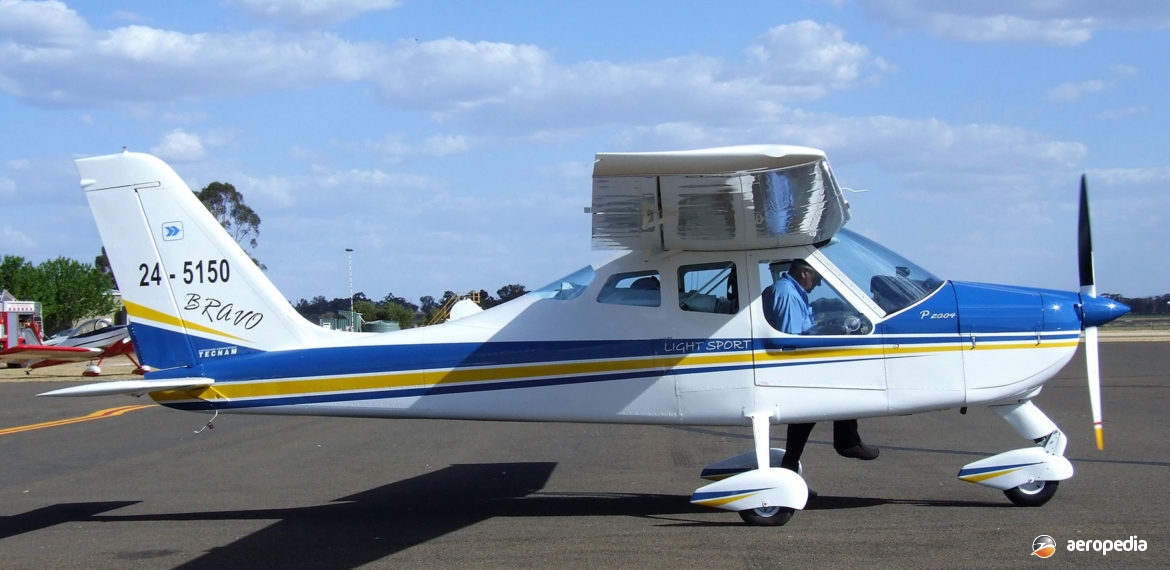Photograph:
Tecnam P2004 Bravo 24-5150 (c/n 109) at Cowra, NSW in October 2007 (David C Eyre)
Country of origin:
Italy
Description:
Two-seat light sport monoplane
Power Plant:
One 75 kw (100 hp) Rotax 912S four-cylinder horizontally-opposed liquid-and-air-cooled engine
Specifications:
- Wingspan: 8.34 m (27 ft 5 in)
- Length: 6.57 m (21 ft 7 in)
- Height: 2.55 m (8 ft 5 in)
- Wing area: 11 m² (118.4 sq ft)
- Max speed at sea level: 241 km/h (150 mph)
- Cruising speed at 75% power: 215 km/h (134 mph)
- Stalling speed: 72 km/h (45 mph)
- Initial rate of climb: 366 m/min (1,200 ft/min)
- Service ceiling: 4,267 m (13,220 ft)
- Take-off run to 15 m (50 ft): 180 m (591 ft)
- Landing run: 125 m (410 ft)
- Cruising range at 75% power, no reserves: 1,093 km (679 miles)
- Fuel capacity: 100 litres (22 imp gals)
- Empty weight: 331 kg (730 lb)
- Useful load: 228 kg (590 lb)
- Loaded weight: 559 kg (1,320 lb)
History:
The Bravo was a development by the Italian manufacturer of the popular series of light aircraft to meet the United States Light Sport Aircraft (LSA) class of flying machine as defined by the Federal Aviation Administration. These new regulations specified that the machine must have a max take-off weight of 599 kg (1,320 lb), or 649 kg (1,430 lb) for amphibians, have a max stalling speed of 83 km/h (52 mph), have a max speed of 222 km/h (138 mph), must have two seats and must have a fixed or ground-adjustable propeller. They were all to have a non-retractable undercarriage and be single-engined, although if they were intended for operations on water or as a glider, a retractable undercarriage was permitted. Power plant was the Rotax 912S engine driving a Hoffman fixed-pitch propeller.
The Bravo was ideal for touring and flying school use and joined a range of designs marketed by Tecnam. It featured an aerodynamically-refined and tapered cantilever wing, this consisting of a single-spar metal torsion box with detachable metal leading-edges. The rear windows in the cabin provided 360 degrees vision and a large luggage area was provided. It had dual controls, with sticks for each pilot, an all-moving tailplane, wide slotted flaps, which were electrically activated, and a re-designed engine cowling giving quick access to the engine.
First of the type in New Zealand was imported as a demonstrator, becoming ZK-TSI (c/n 015), further deliveries commencing in mid 2005, the next three becoming ZK-STT (c/n 009), ZK-TBT (c/n 010), and ZK-TNM (c/n 016).

